Unlike a standard LMS — which is optimized primarily for the student experience — learning content management system software (LCMS or LCMSS) places an equal emphasis on students and administrators.
Specifically, LCMS software includes robust tools for authoring, storing, managing, and editing learning content, as well as presenting it to learners.
Without an LCMS, managers in all departments have to use separate tools for creating content and administering training. They may even need a third tool for content storage and organization, typically a CMS, if they want an organized database of historical training.
Anyone who wants to create a new training has to know how to use three tools and transfer information between them in the appropriate format like SCORM or xAPI.
This is extremely inefficient.
For example, let’s say a sales manager wants to create a quick video for their reps going over how to pitch a new product line. They have to:
- Get administrator access to the authoring tool.
- Create the video, text, or graphics for the training programs.
- Export the training materials.
- Import them to the LMS.
- Make sure the formatting is transferred properly (or troubleshoot if it isn't).
- Send it to the sales team.
- Make a copy of the materials and save them in a CMS for future reference.
This multi-step process causes a lot of friction for employees who walk around with organizational knowledge in their head and want to share it with colleagues.
As a result, expertise simply doesn’t get transferred, knowledge remains siloed, and training creation is left to third-party vendors or the rare internal attempt to update the entire learning system.
To solve these problems, in our experience, you should evaluate an LCMS based on three criteria:
- They make it easy to create new learning content without hiring a vendor, using a separate course authoring and learning platform, or requiring employees to master a complicated course creation process.
- They act as one place to store and organize all course materials so they can easily be repurposed in multiple courses.
- They offer e-learning administration features on par with a leading LMS, including the option to import your existing SCORM, xAPI, or AICC content.
Below, we’ll show you how we designed Bigtincan Learning to meet all three criteria, then review 11 other LCMS software options that could meet your needs.
Have any questions about Bigtincan Learning would work for your organization? The best and easiest way to get those questions answered is to book a Bigtincan demo today.
A Quality LCMS Lets Any Employee Create Content Easily
One of the core things an LCMS helps you do is create content quickly and easily at scale.
If we continue the sales example from the intro with a quality LCMS, the sales manager simply has to create video/text/graphics for a training, and press publish.
This simple workflow makes it easy for employees who are subject matter experts in their field — but not in creating e-learning content — to share their knowledge more easily, and essentially democratizes training content creation, which means you get far more relevant and accurate training.
Now, rather than using a training created by a vendor — which is expensive, only updated occasionally, and not as specific to an individual company as something their internal team would create — employees get highly relevant content that’s coming from a leader within their organization.
On the other side, managers and leaders also benefit from quick content creation tools. For example, if a manager finds themselves answering a question constantly, they can simply create a lesson on the topic and upload it as part of a standard training flow.
LCMS Content Creation Case Study: Bigtincan and EATON
For example, multinational power company EATON uses Bigtincan Learning to train their sales staff and connect them with specialists in each area of the business, rather than using,“vanilla training from vendors,” according to EATON Sales Operations Manager Andy McDonald.
During a conversation at the Sirius Decisions EMEA Conference, McDonald explained that EATON loves working with an LCMS like Bigtincan Learning because it’s super quick and easy to create learning content, even for employees who haven’t done it before.
For example, with Bigtincan, EATON can now have their Senior Vice President of Channel Management explaining the commercial policy in a video.
“It’s EATON people explaining EATON topics in EATON ways,” says McDonald, “And it just resonates so much more clearly with our community.”
Bigtincan Learning Content Creation Features
Bigtincan makes this kind of content creation possible with flexible, but easy to use content-authoring tools.
The base is a flexible drag and drop content creation tool that gives the user options to create pages from scratch, or save pages as templates and reuse them repeatedly.
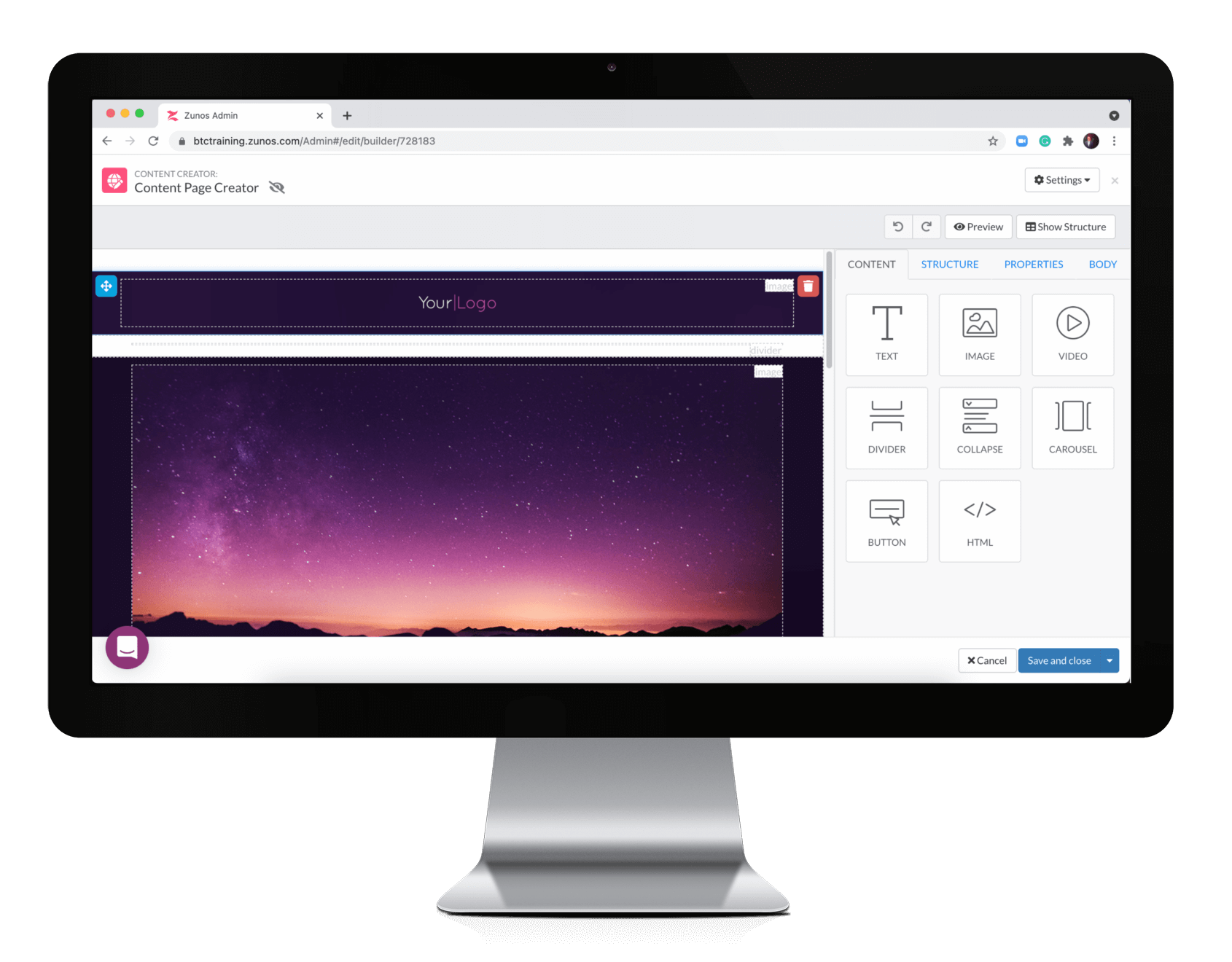
Often the Bigtincan onboarding team will work with learning administrators to create a series of templates for video, quiz, text training, and more, then launch them for use across an organization.
Then, leaders and managers can just shoot a video or write out the learning material, enter it into a template, and publish.
Essentially, content creation becomes as easy as jumping on a video call or writing in a Word document — there’s no need to learn another content creation skillset.
Users can also import SCORM or other training formats. Once uploaded or published, all content is displayed in a learner-friendly LCMS environment (more on that in a moment).
Store and Organize Assets So They Can Be Reused
Most enterprise organizations have hundreds or thousands of training assets that they’ve built up over time and need to store for reference or use across multiple training sessions. However, standard LMS tools have few, if any, tools for managing or referencing large volumes of training content.
Instead, course assets are typically stored in a separate, searchable repository and then uploaded manually every time an administrator needs to use them in training.
The LMS might have some tools for storing and referencing files, but they’re typically very limited and frustrating to use.
For example, let’s say the administrator wants to use a file in two trainings: training A and training B. In a standard LMS, they’d have to:
- Import the file twice.
- Import it for training A, then scroll through a long list of all the training assets they’ve used previously to find the original file again.
- Use a limited search feature if they remember the name of the file and want to look it up.
But these tools aren’t efficient, and make simple uploads or updates time consuming.
Bigtincan Lets You Store Files for Easy Reference and Repurposing
By contrast, Bigtincan Learning lets you upload files right into an easy to use file folder structure with a robust AI-powered search feature.
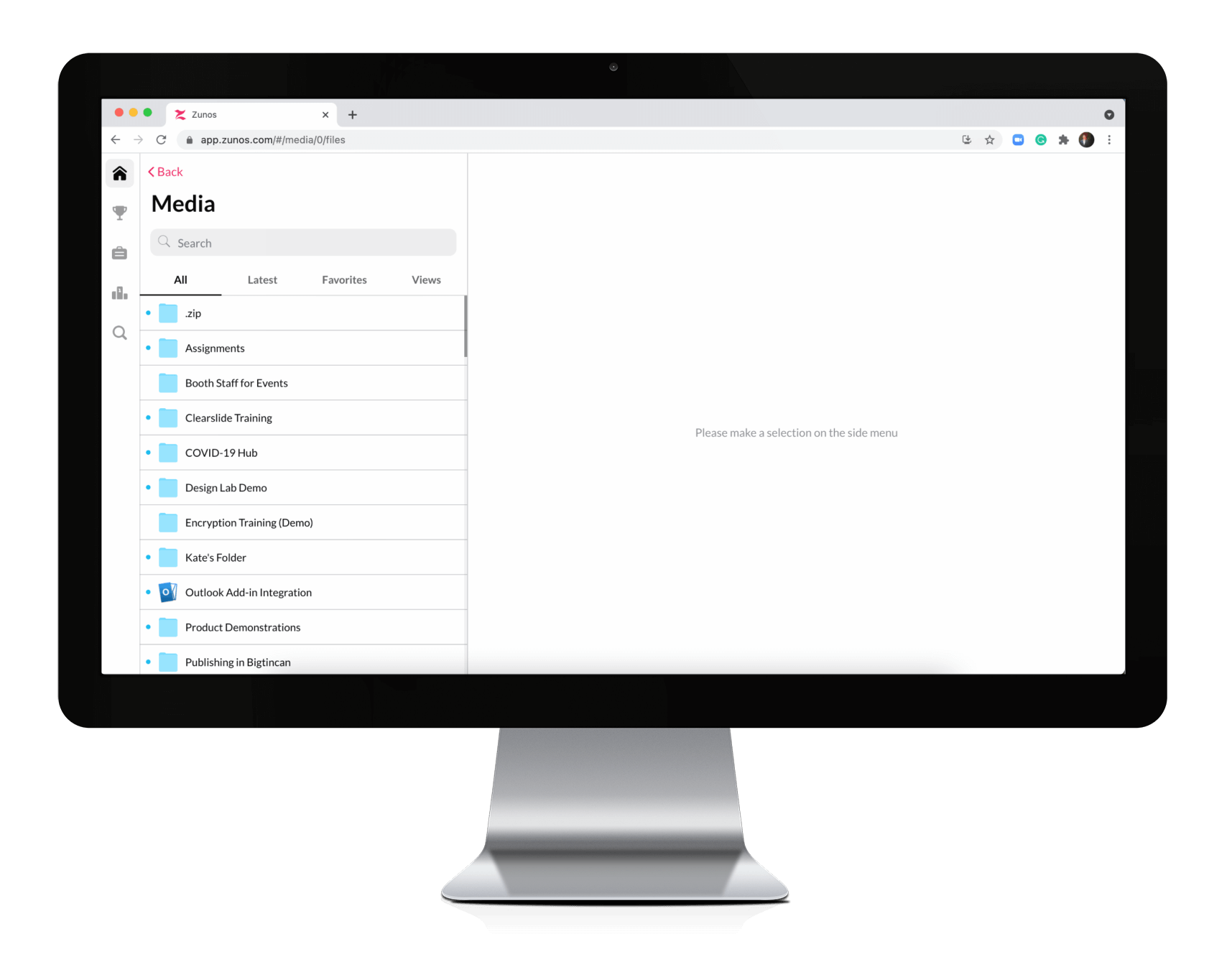
The files in this section can be organized, tagged, and used in multiple trainings without being uploaded multiple times, which eliminates much of the manual work involved in updating or creating multiple versions of a course.
By default, this media section is easily accessible on the homepage of Bigtincan, but like other visual elements, can be custom-tailored and moved around in the interface (more on that in in the LMS section below).

Where LCMS and LMS Overlap
Of course, an LCMS is not just a CMS where you can create and store files. To be effective, it still needs to offer a learning platform that facilitates the learning process and helps learners absorb and retain each training effectively.
The best LCMS platforms blend all three components — authoring, course management, and teaching — into one platform so they can act as a one-stop shop for organizational training.
Bigtincan Is Optimized for Faster Training and Learning Retention
Bigtincan Learning is built to support the latest learning techniques to keep learners engaged, onboard them quickly, and help boost learning retention:
- Micro-learning support so administrators can break lessons into bite-sized trainings that are proven to boost engagement and retention.
- Just-in-time learning support means the platform can be used on any device and is easy for students to navigate so they can find the trainings they need right when they need them.
- Adaptive learning is supported by AI-powered content suggestions and tailored and dynamic learning paths that help ensure each individual user has the best next lesson in front of them at all times.
And, the Bigtincan Learning platform:
- Is mobile learning-friendly and works offline so employees can engage in learning activities anywhere.
- Supports SCORM and xAPI imports so you can easily bring over your current trainings.
- Supports blended learning, so you can effectively manage on- and offline training sessions.
- Is easily customizable. Almost every element you see in the screenshot below can be moved and adjusted, and your branding can be applied to the entire platform.
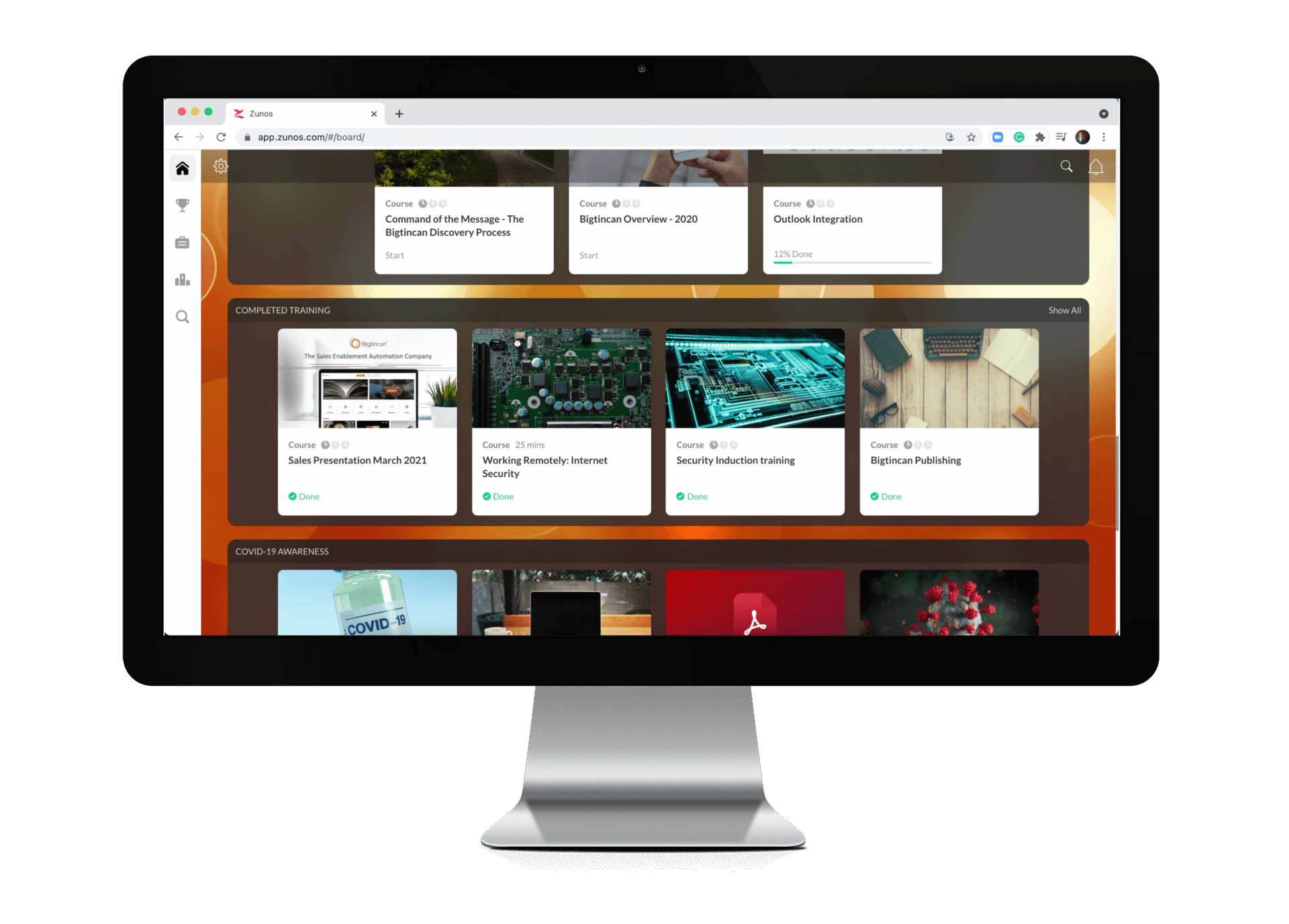
Learn more about how Bigtincan supports these features and learning techniques in this other resource: The Best Enterprise LMS 2.0 for Training and Knowledge Retention
Other Learning Content Management System Software
Compared to other LCMS software, Bigtincan is sales-focused, but flexible enough to be used in other departments and in any industry.
For example, a leading US-based insurance provider uses Bigtincan Learning to train insurance adjusters, and several Fortune 500 retail organizations use the platform as well.
Current customers include General Motors, American Airlines, Sony Playstation, Campbell’s, and more.
To get your questions answered and see how Bigtincan Learning could work for your organization, book a demo today.
Absorb LMS
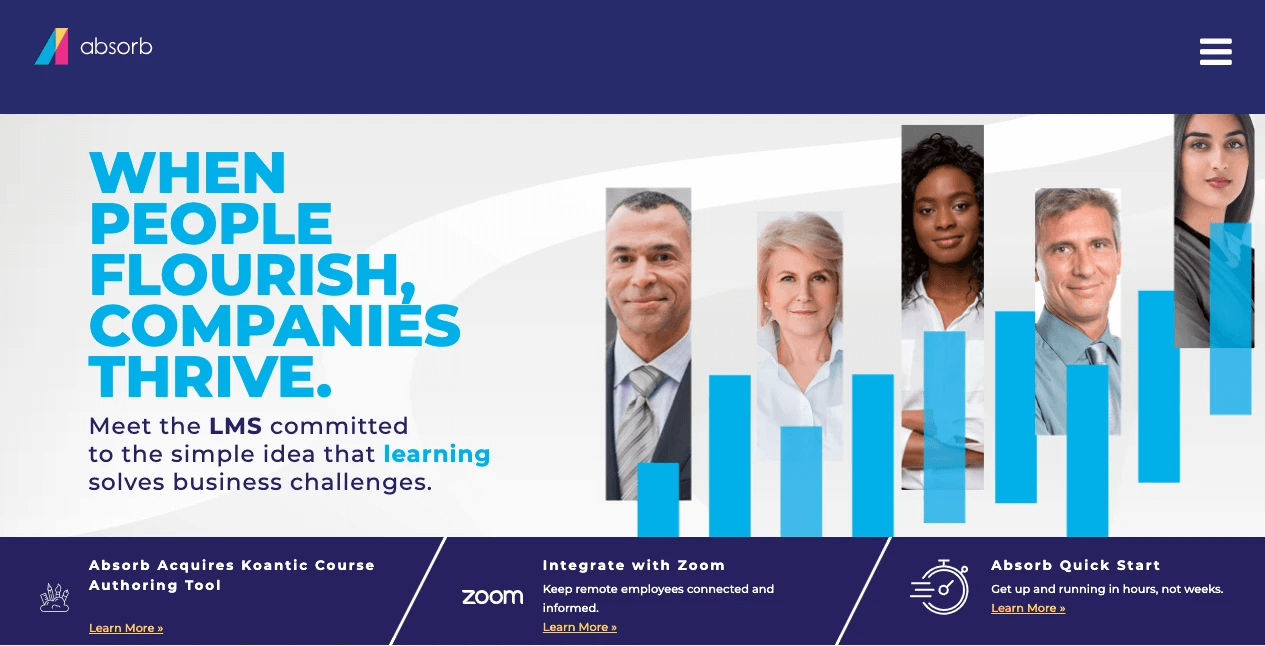
Despite the name, Absorb LMS includes more than standard LMS functionality, including a recently launched content authoring tool called “Absorb Create”.
Like Bigtincan, they support enterprise customers. They also offer an eCommerce integration, mobile app, and a feature called “Absorb Pinpoint” that helps you create microlearning videos from your existing content without editing the original files.
Learn more about Absorb LMS here.
Docebo
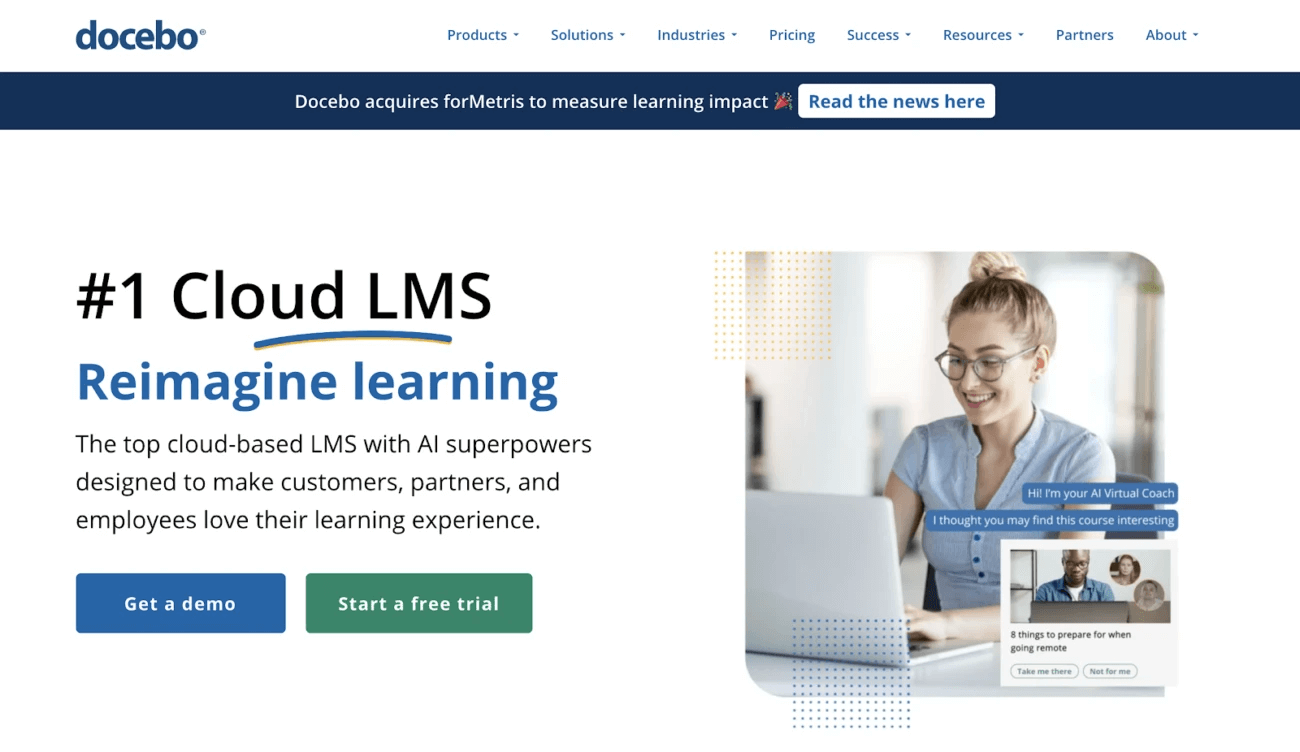
Docebo also offers content authoring, management, and LMS features.
They also offer an online learning marketplace with pre-built training courses, and an AI engine to help recommend content to learners. Current clients include Amazon AWS, Walmart, and Heineken.
Lessonly
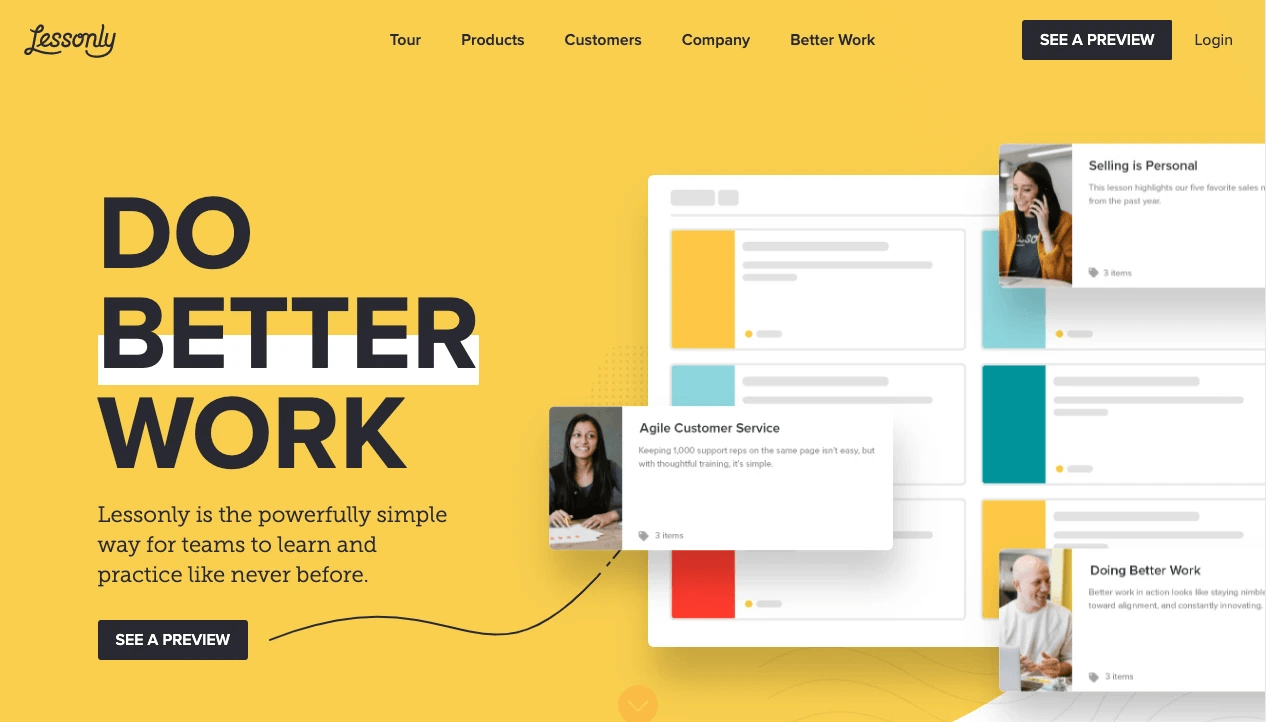
Lessonly is a user-friendly LCMS software that’s very easy to use. Their tagline is even, “If you can write an email, you can build a lesson in Lessonly.” They serve companies of all sizes, including Goodwill, U.S. Cellular, and Jostens.
Learn more about Lessonly here.
SAP Litmos

SAP Litmos serves more than 22 million users worldwide and includes a unique library of off-the-shelf e-learning courses in addition to standard LCMS features. Current customers include Alzheimer’s Society, Lions Clubs International, and Sunrun.
Learn more about SAP Litmos here.
Adobe Captivate Prime
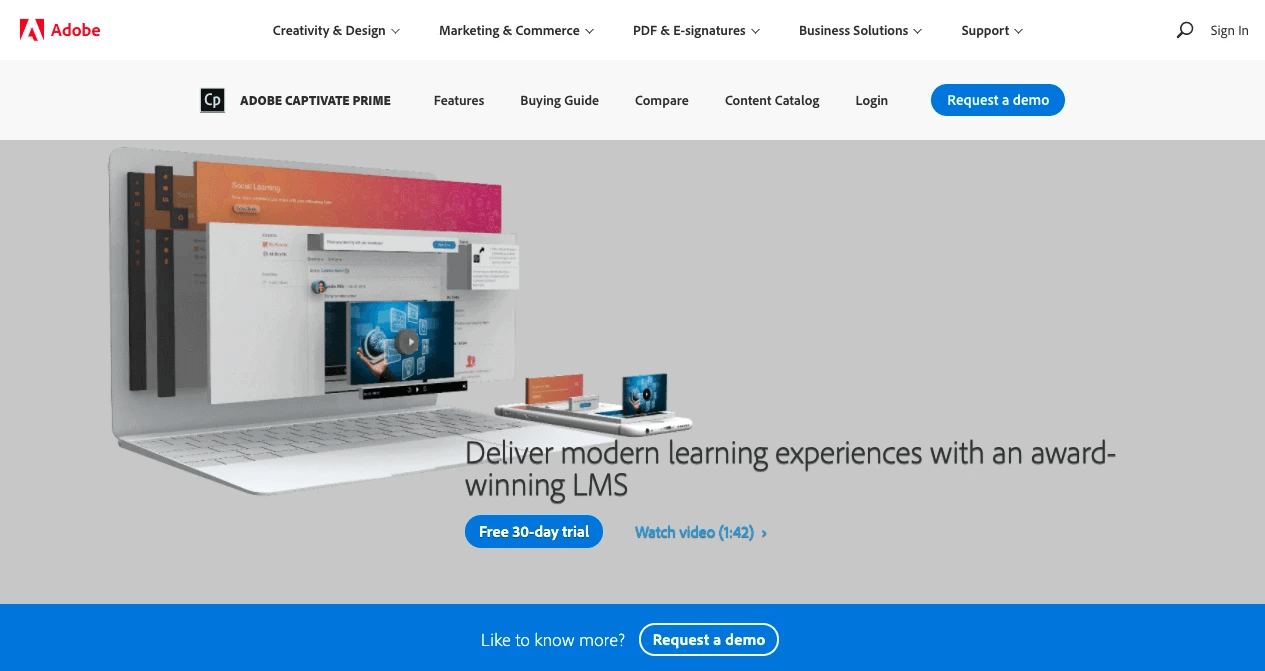
Adobe Captivate Prime is a cloud-based LMS that includes tools for authoring and content management. They say they’re “One learning platform for all your enterprise needs,” and include a robust API to integrate with other enterprise platforms, and AI-powered features throughout.
Learn more about Adobe Captivate Prime here.
Articulate
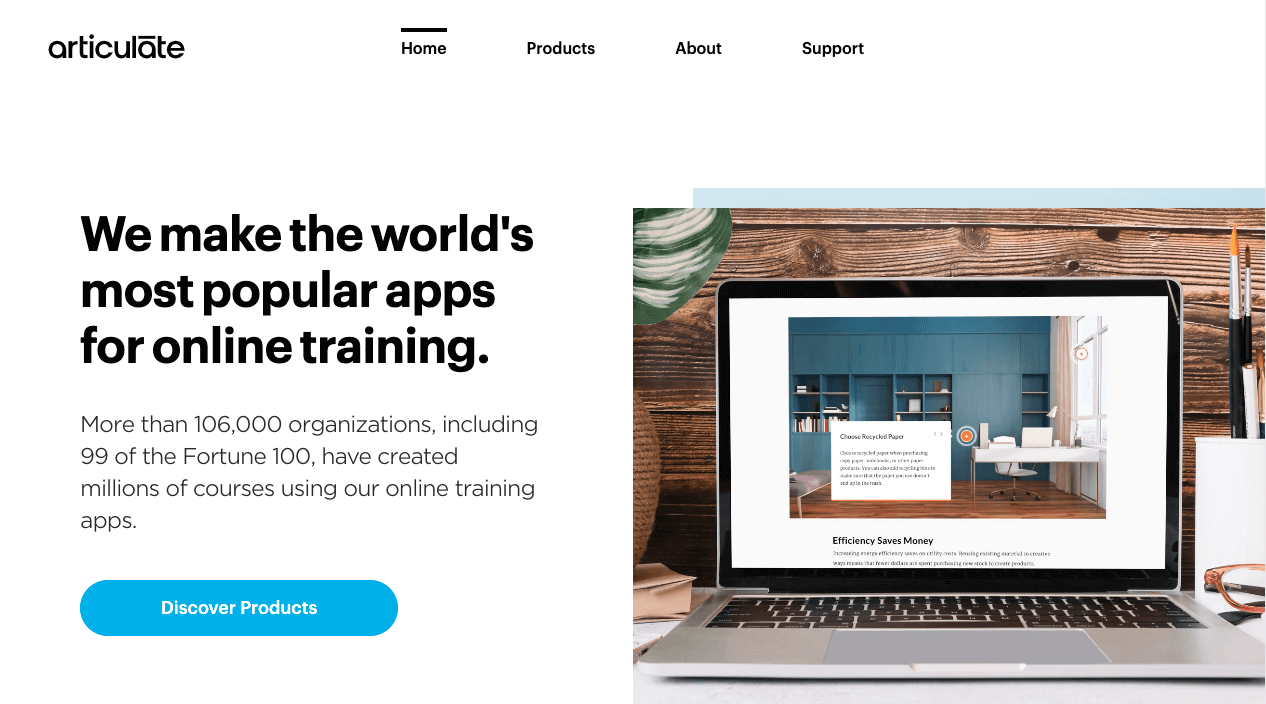
Articulate is arguably one of the most popular LMS suites in the enterprise space, serving 99 of the Fortune 100, and 106,00 organizations. Their suite of products includes Articulate 360 and Rise. Articulate 360 is the original platform with more robust features, but requires a desktop download and only works on PC, whereas Rise is more user-friendly and works 100% in the cloud.
Learn more about Articulate here.
Xyleme
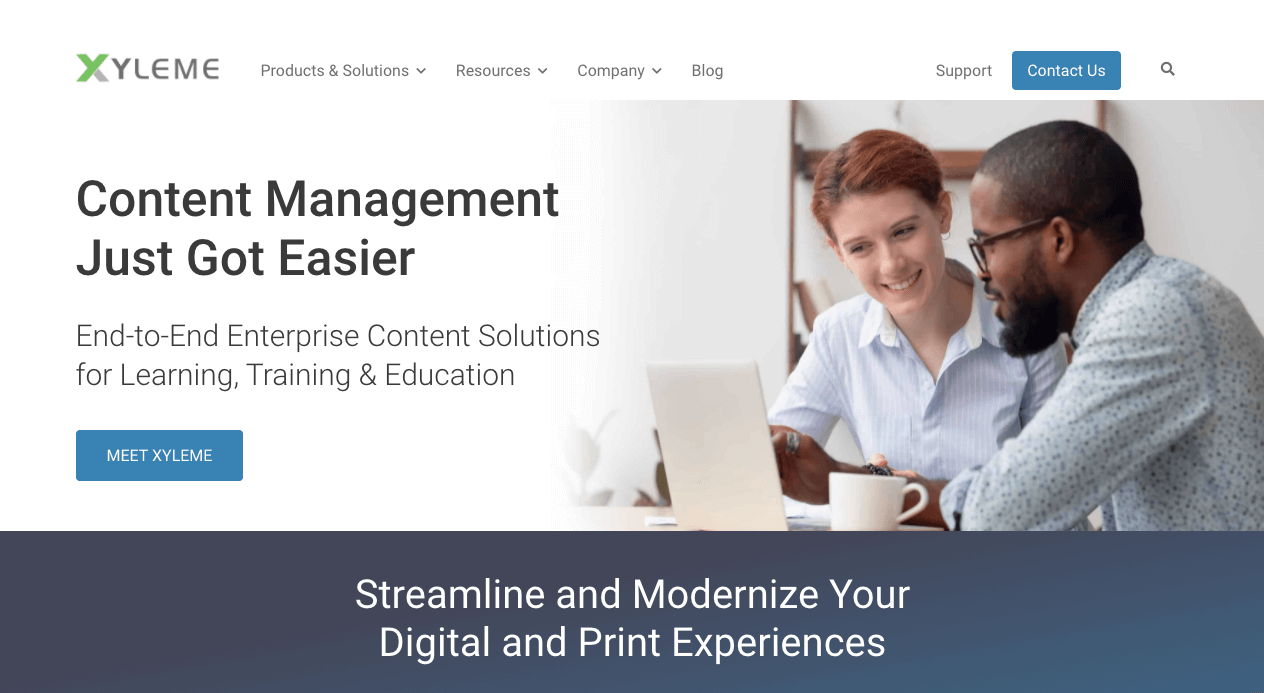
Enterprise content management and LMS platform Xyleme offers “End-to-end enterprise content solutions” for digital learning and training needs. Their website says they can help you “Reduce content development time by 30%,” and current customers include 3M, Cisco, and VMware.
BrainCert
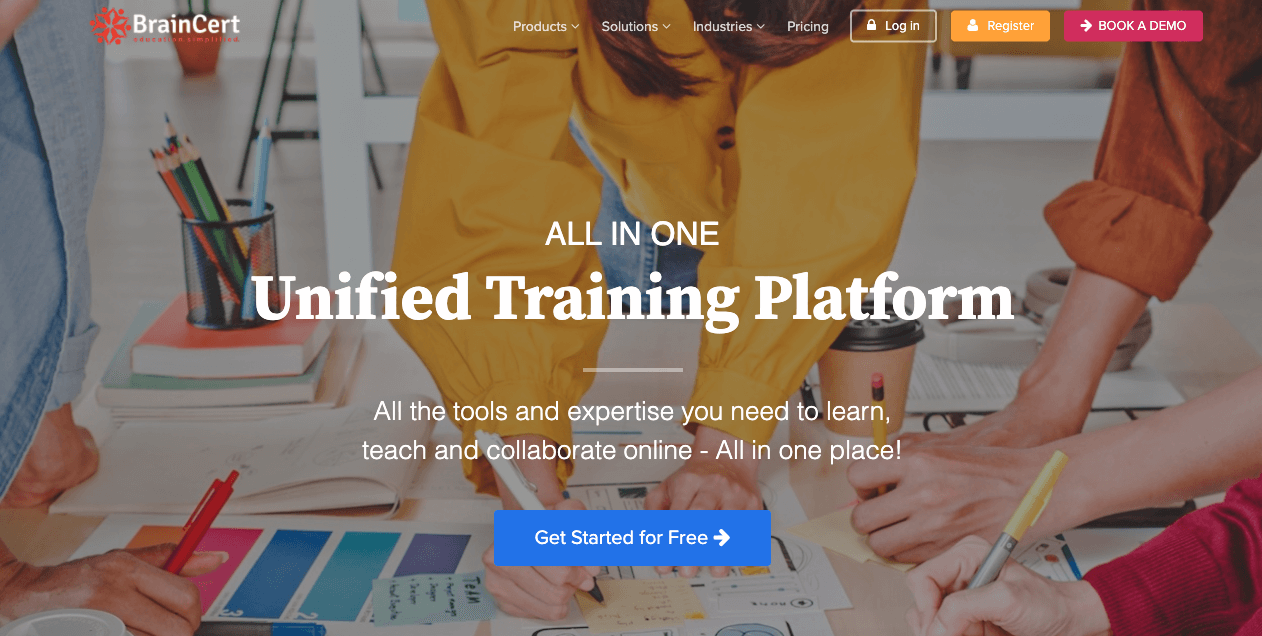
BrainCert is an all in one “unified training platform” that includes learning and development features, as well as a Virtual Classroom as a Service, and real-time web conferencing.
They say they’re optimized for enterprise companies, but prominently feature tools that help smaller course creators sell their knowledge as well, and don’t seem to work with as many enterprise companies as many of the solutions on this list.
Learn more about BrainCert here.
Looop

Compared to other software on the list, Looop is a relative newcomer to the market, and they say they’re building the “future of enterprise learning,” with a heavy emphasis on the user experience and UI of their products throughout the site.
Clients include Asos, and Radisson among others.
dominKnow
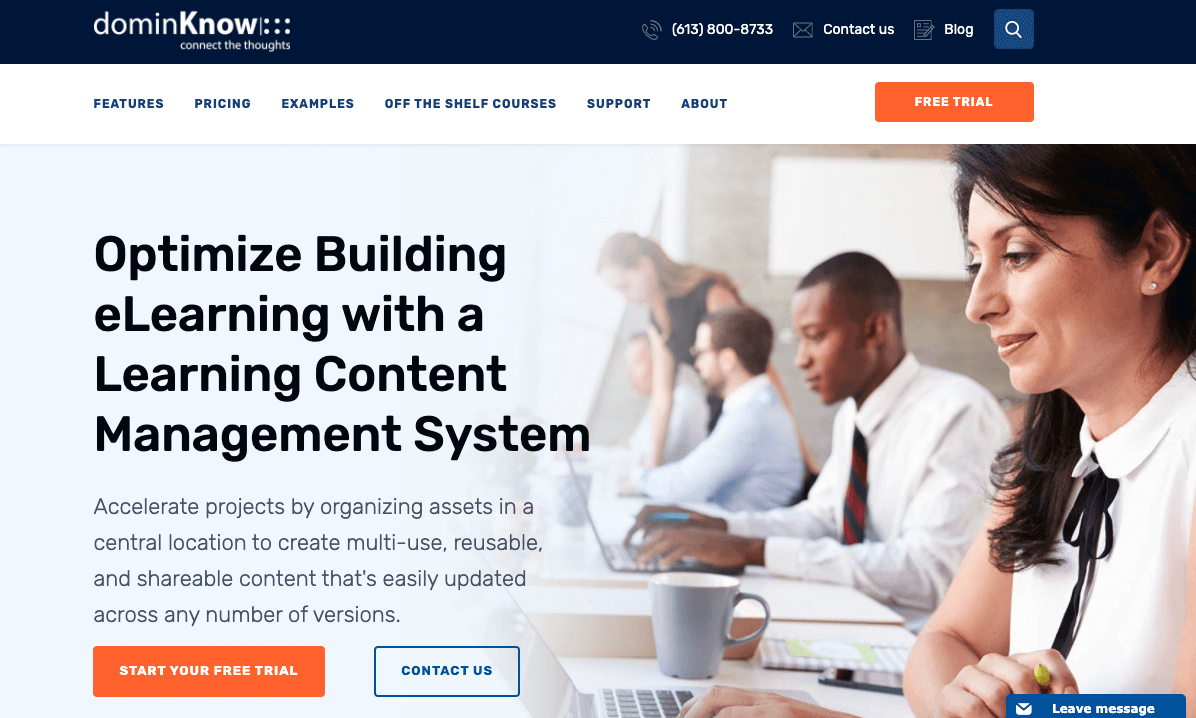
dominKnow features their authoring tools heavily across their entire site — in fact, you could say they’re an authoring tool first. However, they do have a page on their site dedicated specifically to their LCMS features, so they’re still worth checking out.
Learn more about dominKnow here.
SimTutor
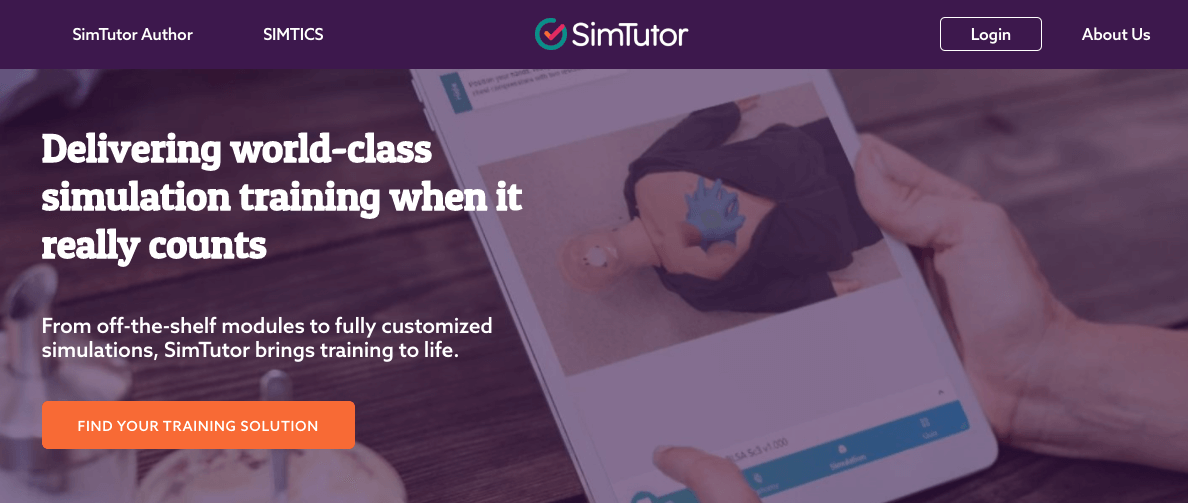
SimTutor focuses specifically on simulation-based trainings. It’s their mission to “best-in-class simulation solutions that prepare learners for real-life situations.”
This makes them a great fit for niche applications such as colleges, medical institutions and healthcare companies. Because of their focus, they offer unique authoring tools specific to simulation training, and LMS features for presenting the training as well.
Learn more about SimTutor here.
Try Bigtincan for Enterprise Learning and Training
If you’d like to learn more about how Bigtincan Learning can help your sales or other enterprise teams manage and administer learning objects more effectively, request a demo today.
